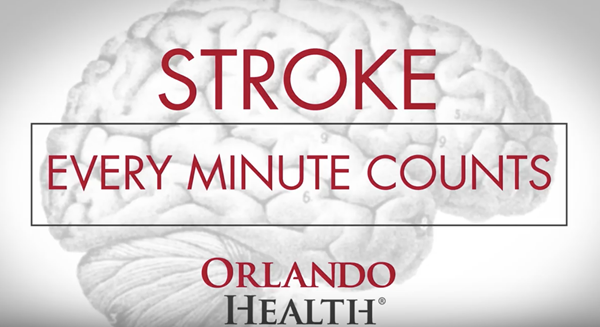A mini-stroke, also known as a transient ischemic attack (TIA), is a warning sign that a stroke could be imminent. But women are less likely to get a diagnosis and treatment, and that can be deadly.
Stroke, the fifth-leading cause of death in the United States, occurs in men and women almost equally, and researchers trying to understand the cause of this gender gap in treatment have focused mostly on stroke’s cousin: coronary artery disease. This condition, under-diagnosed and under-treated in women, increases stroke risk because plaque buildup can block the flow of oxygen-rich blood to the brain (leading to stroke) just as it can to the heart (leading to heart attack).
Women account for 58 percent of all stroke deaths, and biology seems to play a role: Women are less likely to have heart disease or stroke before menopause, which means they are 10 to 15 years older than the average male patient with the same diagnosis. And with increased age come co-existing health problems that likely affect outcomes.
It all adds up to this: Women should be particularly aware that stroke-like symptoms, even short-lived, could signal a dangerous medical condition and seek immediate, potentially life-saving treatment to prevent a stroke.
The Warning Signs
A TIA occurs when blood flow to part of the brain is temporarily blocked or reduced, often by a blood clot. This causes sudden temporary stroke-like symptoms, including:
- Weakness, numbness or paralysis on one side of your body
- Slurred speech or difficulty understanding others
- Blindness or trouble with vision in one or both eyes
- Dizziness
- Severe headache with no apparent cause.
It’s tempting but dangerous to dismiss short-lived symptoms once they fade. About 50 percent of people have a stroke within two days of a TIA, and 20 percent have one within the next three months, so quick diagnosis and treatment could save your life.
Stroke or Mini-Stroke?
A mini-stroke lasts anywhere from a few minutes to 24 hours. When the blood clot breaks apart and blood flow returns, symptoms go away and there is no permanent damage. A stroke occurs when the blockage — often caused by a blocked or ruptured artery — lasts long enough to kill brain cells, impairing how the body works and leaving stroke survivors with various levels of disability depending on which part of the brain was damaged.
While anyone can have a stroke, the risk increases over time, doubling every 10 years after age 55 as our arteries become harder and narrower. Additionally, certain medical conditions and behaviors can increase your risk of stroke, including:
- High blood pressure
- Diabetes
- High cholesterol
- Obesity
- Irregular heart rhythm (atrial fibrillation)
- Heart disease
- Smoking
- Drugs/alcohol
- Obstructive sleep apnea
- Hormonal therapy (birth control pills, estrogen, testosterone)
Quick Diagnosis Is Vital
If you have stroke symptoms, call 911 immediately. An ambulance will take you to the nearest certified stroke center for emergency evaluation and potential treatment with a clot-dissolving drug; a friend or family member may not know where that is.
A stroke specialist will take your medical history and conduct a physical exam. There’s no single biomarker or diagnostic test to diagnose TIA, but tests like a CT scan of the head or an MRI may be used to check for damage to the brain and other diseases.
How you describe your symptoms could be important. In one study, men who reported pain and sensory loss (like vision impairment) were more likely than women to get a TIA or stroke diagnosis. One theory is that doctors may be more likely to dismiss a woman’s headache as a migraine since women are more likely to have those. Whatever the cause, it’s important for anyone suffering from stroke-like symptoms to be evaluated for a TIA or stroke, and patient and medical provider share responsibility for making sure that happens. Ask to be evaluated before heading home with a migraine diagnosis.
Treatment
Experts say 80 percent of all strokes are preventable with lifestyle changes and treatment, and a TIA diagnosis is the first step down that path. If your symptoms have been diagnosed as a TIA, your treatment will focus on preventing a stroke including a heart-healthy diet, weight control, smoking cessation, and sufficient activity and exercise. In addition, you may be prescribed certain medications, including:
- Blood thinners to avoid blood clots
- Blood pressure or cholesterol drugs
- Diabetes medication because over time, excessive blood glucose can increase fatty deposits or clots in blood vessels, leading to stroke.
Some people may need a surgical procedure to widen narrowed carotid arteries that supply blood to the brain.
Remember: Don’t write mini-stroke symptoms off as the result of stress or dismiss them as another migraine. A quick evaluation, diagnosis and treatment could save your life.
Find Out Your Stroke Risk
Most strokes involve a clot that blocks blood flow to your brain (ischemic stroke). Sometimes, a weakened blood vessel breaks, causing bleeding (hemorrhagic stroke). A temporary clot can cause a “mini stroke” or TIA (transient ischemic attack). The smallest stroke can damage your brain or warn of a bigger stroke to come. It can limit your ability to think, talk or move. If you see symptoms, call 911 right away.
Learn More Now










